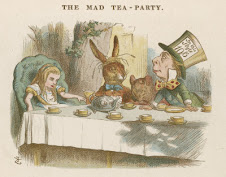The Top Two Open Primary would effectively make our statewide elections (including Congressional ones) non-partisan in the same way our local elections for mayor and city council are. Rather than running in party primaries heavily controlled by insiders, candidates for office would all run on the same ballot against each other regardless of party. All voters — including independents — could simply vote for the best candidate. The top two vote getters would then go on to a “runoff” style election.One prominent opponent of "top two" is Richard Winger of Ballot Access News. In a rebuttal of a Newsweek article in support of the measure by Jonathan Alter (who calls it "The Jackass Reduction Plan"), Winger responded:
Why is this so important? Because it empowers independent voters — that group of voters that cares more about what is best for the state and country than what is best for the political parties — to exercise serious political clout. Approximately 20 percent of California voters are registered “Decline to State,” California's version of independents with no party affiliation. When empowered to do so, independent voters have a track record of shaking up elections . . .
Some in the third parties have decided to oppose the open primary because it does not give their candidates a “guaranteed spot” in the second round of the election. They also complain it would require them to register more voters in order to maintain their presidential ballot status.
What these third parties ignore is the very concept of the open primary: That the people — not any party — have the right to control our elections process. Today less than 1.5 percent of voters are registered in the Green, Peace and Freedom, and Libertarian Parties combined (down significantly from 10 years ago). Over the last decade, California independents have made it clear that we want more than just a protest vote; we want to be able to exercise our clout in the political mainstream.
1. “Top-two” helps incumbents and does not “reduce jackasses.” When it was used for the first time in Washington state in 2008, out of 123 state legislative races, only one incumbent was defeated in the primary, and his reputation at the time of the primary was such that he probably would have been defeated under any election system.
2. Corrupt special interests were the top financial backers when the “top-two” initiative (Prop. 62) qualified for the California ballot in 2004. The leading financial backer was Countrywide Home Loans, which at the time was the nation’s biggest home mortgage lender, but which no longer exists, having been bought out by Bank of America in 2008 . . .3. “Top-two” wipes minor party and independent candidates out of the general election campaign season. This was shown when Washington state used the system for the first time in 2008. For the first time since Washington became a state, no minor party or independent candidates appeared on the November ballot in any congressional election or any statewide state office election.
4. The system may well be unconstitutional. On August 20, 2009, a U.S. District Court in Washington state said the system may be unconstitutional and set the stage for new briefings and a probable trial.
5. “Top-two” greatly increases the cost of campaigning, because it forces candidates to run, in effect, two campaigns in front of the entire electorate (assuming they qualify for the second round).
6. “Top-two” is not favored by people who have studied election systems. Political Science Professor Paul Gronke, of Reed College, posed a question to all 600 political scientists on the Political Methodology listserve, asking how many support “top-two”. Only one political scientist replied in the affirmative.







3 comments:
Ironically, Jason Olson was once a member of a minor party, the New Alliance Party. The New Alliance Party accomplished some amazing tasks, especially placing Lenora Fulani on the ballot in all 50 states in 1988. But the New Alliance Party never met its goals of becoming a ballot-qualified party in either New York or California, and most New Alliance Party veterans seem ashamed of their past party. They inevitably say that Lenora Fulani was an independent presidential candidate in 1988, ignoring the very fact of the New Alliance Party's existence. One of their members, Omar Ali, wrote a book about black involvement with minor parties, and his book didn't even mention the New Alliance Party. One could say that some New Alliance Party veterans, disappointed that their party didn't accomplish its goals, have now turned against all other minor parties and are trying to injure other minor parties.
I suppose one COULD say that. And it may even be true. It is probably also true of some of the most rabid partisans of the Democratic and Republican Parties as well; all those whose desires for instant political gratification could not be met by the realities of third party and independent organizing work, and, frustrated once again in the major parties, blame third party activists for the failures of duopoly machine.
That aside, Olson is associated with Independent Voice SF, which is a local affiliate of IndependentVoting.org, and hence of the Committee for a Unified Independent Party, and thus the Independence Party, with which Fulani is still active, I think.
Seeing as Olson is 34 years old, that would make him 12 in 1988. How would he be part of the New Alliance Party?
Where do you get your information?
Post a Comment